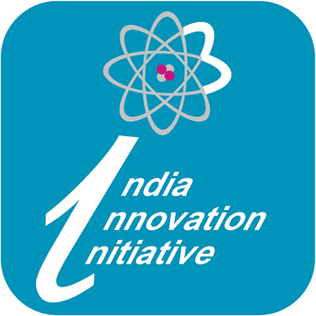/topics/governance
Governance
Conservation of lakes - Myths and realities of desilting
Posted on 09 Jul, 2010 11:11 PMDesilting is becoming a major component of any Lake Conservation Project now a days. The basic reasons given for necessity of desilting are - increasing the storage capacity and checking eutrophic conditions.
As it is not practicable to reverse the slow process of silting in the bed of lakes through which only silt can be removed, there is no word like 'desilting' in any standard English dictionary. What we are doing in the name of 'desilting' is practically 'digging' or 'excavation' of lake bed. By so called desilting, the original lake bed is disturbed which has far reaching adverse effects on the performance of the lake. Most visible effect is the increase in percolation rate resulting in heavy seepage losses through the lake bed as observed after massive desilting at Pushkar lake in 2009.
Rajasthan State Water Policy - State Water Resource Planning Department (2010)
Posted on 03 Jul, 2010 02:21 PMThe Rajasthan State Water Policy 2010, describes the critical status of water in Rajasthan in terms of:
- The growing imbalance between demand and supply of water
- Uncertainty in availability of water
- Inequity in access to water
- Low operational efficiency of water resource development projects
- Depleting groundwater resources and deteriorating quality of water
- High cost of service, low cost recovery and low level of expenditure
- Lack of ownership among stakeholders
The policy has evolved out of the earlier policy documents and intends to function from the new perspective of Integrated Water Resources Management, which is holistic and includes a bottom up approach.
Recent technical literature relevant for the hydrologists of the country – A compilation by the National Institute of Hydrology
Posted on 01 Jul, 2010 04:10 PMThe report is a compilation of abstracts of hydrological literature from select national and international Journals for the period 1991-95. Though a sizeable number of Journals are published in the field of hydrology and water resources, scientists involved in different studies and projects find it difficult to go through all of them.
Recent technical literature relevant to the Hydrologists of the country – A compilation by the National Institute of Hydrology
Posted on 01 Jul, 2010 03:30 PMThe report is a compilation of abstracts and annotated bibliography of hydrological literature from select national and international Journals for the year 1996-97. Though a sizeable number of Journals are published in the field of hydrology and water resources, scientists involved in different studies and projects find it difficult to go through all of them.
Institute of Water Policy's 2nd Global Water Policy Dialogue, Singapore
Posted on 28 Jun, 2010 01:04 PMOrganizer: Institute of Water Policy
Venue: Raffles City Convention Center: Canning Ballroom, Singapore
Topic:
- Index of Drinking Water Adequacy (IDWA)
Parameter characterization for solute transport in groundwater - A research report by National Institute of Hydrology
Posted on 27 Jun, 2010 08:16 AMThe study attempts to develop a mathematical model for transport of a solute in groundwater by taking the mass balance of the dissolved pollutant over a static elementary volume in three cartesian coordinates.
The management of groundwater resources is becoming a complicated task due to the overwhelming pressure on groundwater and the changing scenario of groundwater quality (physical, chemical and biological).
The hydraulics of groundwater is governed by many bounded and un-bounded factors. The mixing of constituents in groundwater is an important factor that shapes the occurrence of constituents in any precise location at any given time.
Renukaji Dilli Ke Nalon Mein - A documentary about the movement against the proposed Renukaji Dam Project
Posted on 18 Jun, 2010 05:22 PMThe Renuka Dam Project proposed over the river Giri Ganga (a tributary of the Yamuna) located some 300km away from Delhi, is a joint project of the governments of Himachal Pradesh (HP) and Delhi, to be constructed by the Himachal Pradesh Power Corporation Limited (HPPCL) in Sirmaur district of HP.

Agilent Technologies: India Innovation Initiative - i3
Posted on 18 Jun, 2010 12:41 PMContent and Image Courtesy: India Innovation Initiative

The objective of the India Innovation Initiative project is to create an innovation eco-system in the country by sensitizing, encouraging and promoting innovators and facilitating commercialization of the innovations.
DST and CII jointly launched the Young Inventors initiative "Steer the Big Idea" in the year 2004. It was aimed at capturing the innovative ideas from young innovators for the benefit of Industry & society. In 2005, CII & DST joined hands with Industry to form IRIS - Initiative for Research and Innovation in Science. IRIS has been focused so far on school students i.e. innovators below the age group of 18 years. Agilent has been organizing the Agilent Engineering and Technology Awards through which it has been encouraging engineering students towards hands-on engineering in India and recognizing innovation.
CII & DST have now joined hands with Agilent to launch the nation-wide innovation competition for all innovators above the age group of 18+.
Need to bring focus of water & agriculture policies onto rainfed farming : SANDRP May '10
Posted on 18 Jun, 2010 11:03 AM![]()
The Dams, Rivers and People issue for Apr-May 2010 is out. The state government policies, programmes and practices in water resources and highlights the need to bring focus of water & agriculture policies onto rainfed Farming. It is likely to yeild better economic, hydrologic, sustainable, equitable and climate friendly results and foodgrains production as per our future demands.
Ek Phirangi Raja - Chutki Bhar Namak Paseri Bhar Anyay: The story of Frederick Wilson and the Great Indian Hedge
Posted on 18 Jun, 2010 12:33 AM Ek Phirangi Raja
Ek Phirangi Raja
In this essay, Romesh Bedi recounts the true story of Frederick E Wilson, a British army officer, who deserted the army after the Sepoy Mutiny of 1957, escaped to the Himalayas, and settled in Harsil, a remote village in Uttarakhand on the banks of the Bhagirathi.
Wilson makes a flourishing business from the export of skins, fur, musk from the region, and rips the local deodar forest, to cash in the growing demand for wooden sleepers during the expansion of the Indian railways by the British, which were sent down to the plains through the rivers. Wilson soon acquires a lease from the Raja of Tehri-Garhwal, for his timber business and keeps the Raja happy by giving him a share of the profits, and even begins to mint his own local currency, because of which locals start calling him Raja.






